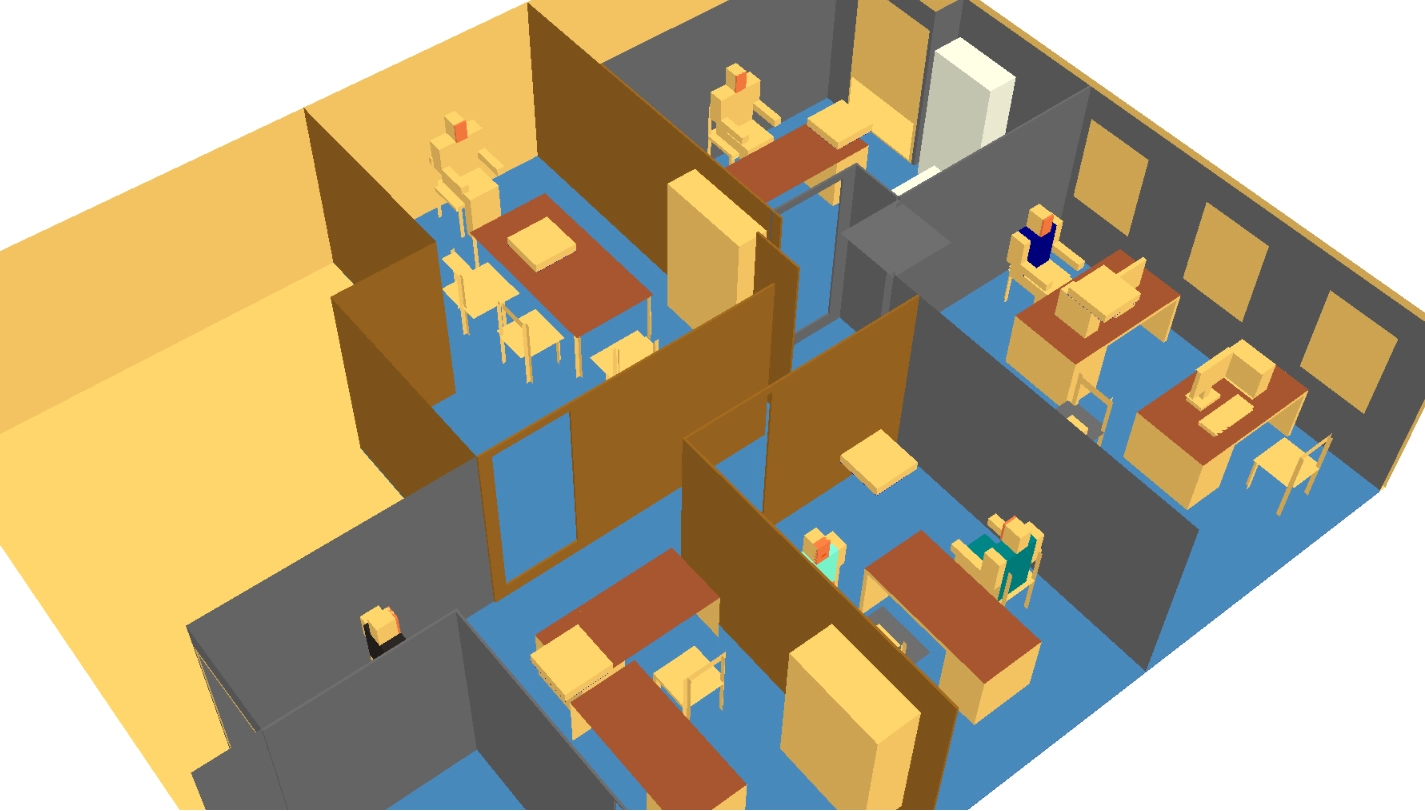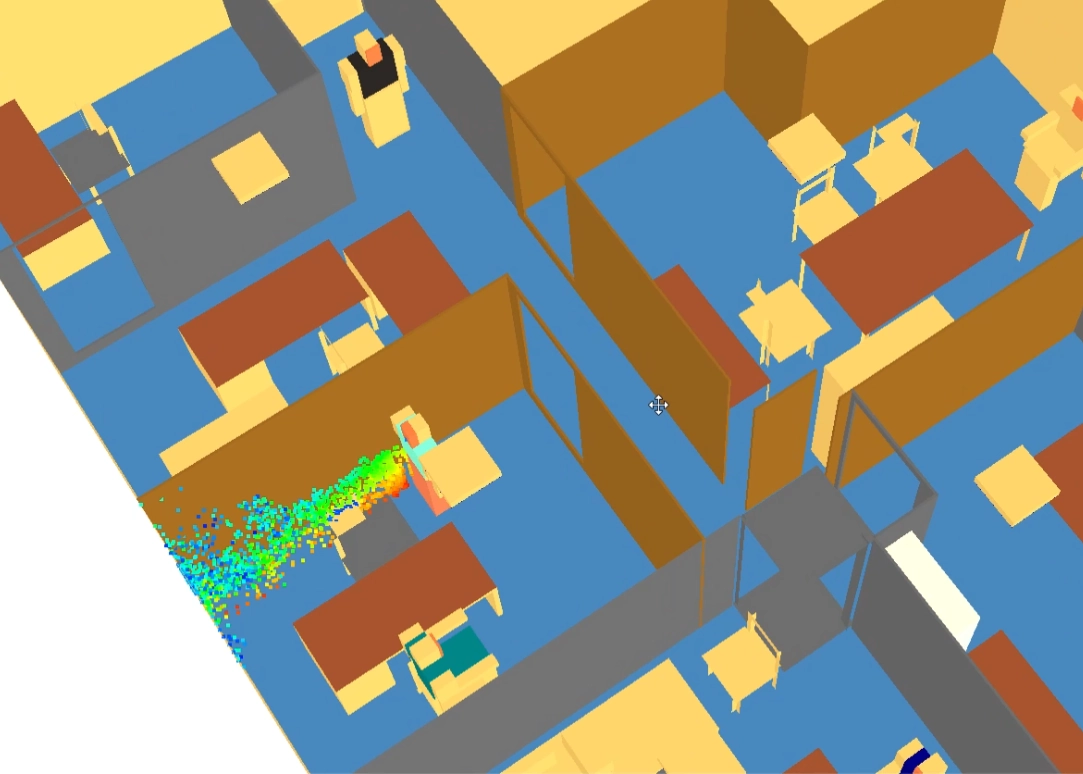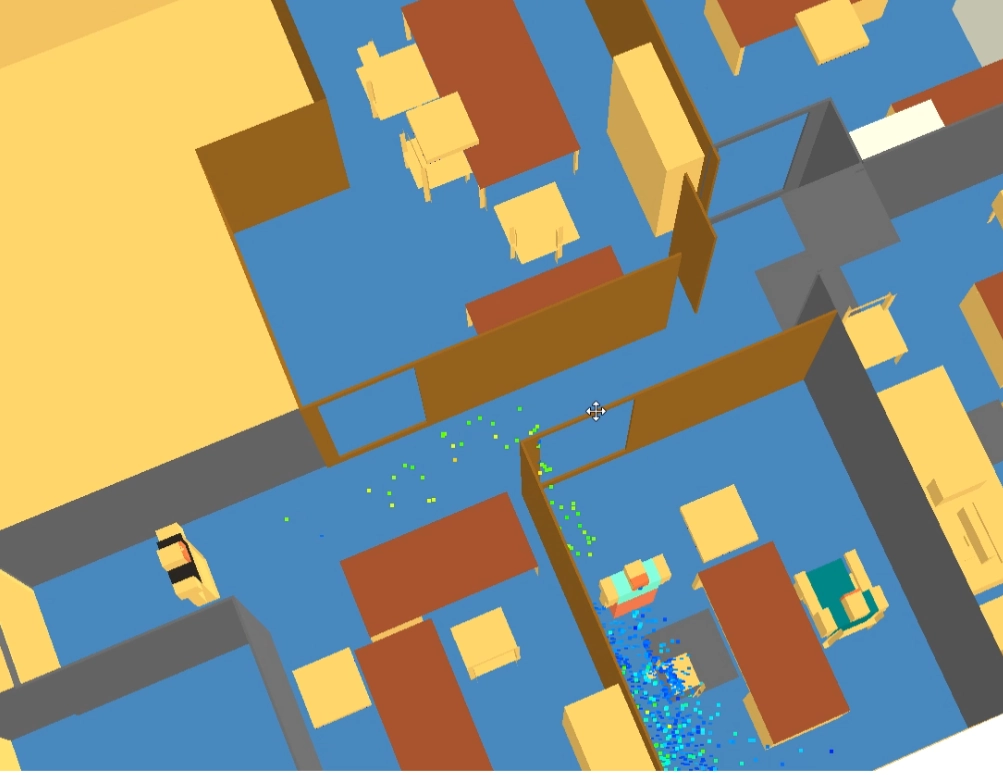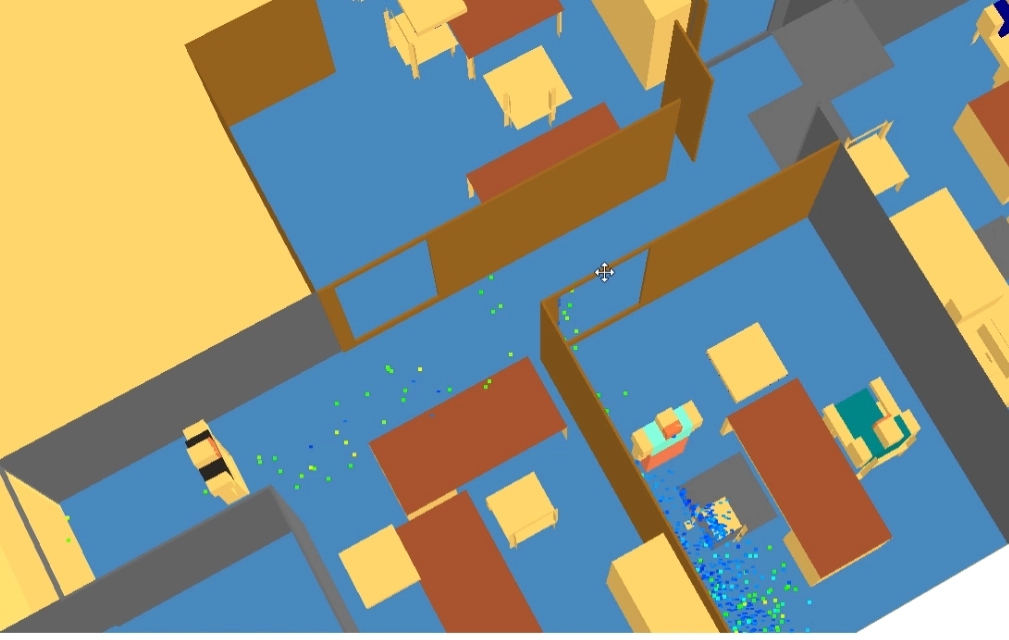Are you worried about the spread of airborne aerosols and pollutants in your office? Do you want to make the air in your offices safer to breathe with well-positioned vents and barriers? Would you like to know who may be more at risk from exposure to airborne bacteria or viral particles?
Computational Fluid Dynamics (CFD) is a powerful tool that helps to predict complicated fluid and particle flow. CFD has the capability of tracking individual particles and gas species, so it is feasible to predict, to some extent, the spread of airborne aerosols or pollutants. This information can help to inform the design of ventilation and air conditioning (HVAC) systems and physical barriers, or the location of desks, queues and sitting areas.
Greenplan did a case study for an office in Somerset West to see how the droplets from a sneeze could spread through the office. A rough approximation of a single sneeze was modelled to see where the particles might go and on which surfaces the settling occurs. The geometry of the office is shown below in Figure 1.

Figure 1: Office geometry
The office has a relatively simple air conditioning system - a single ceiling-mounted inlet in each room, with an extraction grille in the ceiling above the main entrance door. The system was included in the model since it increases the movement of air from one room to another, and therefore the spread of contaminants and aerosols.
Sample results are provided in the figures below, showing an uncontained 'sneeze' followed by the spread of water droplets through the office as a consequence of the air movement induced by the HVAC system. For this case, we modelled a high air flow rate through the HVAC system at high humidity levels. The high humidity tends to prolong the droplet life and the HVAC air flow rate flushes the droplets into the passage. As can be seen in Figures 2-4, someone walking into the office through the main entrance door could be exposed to some droplets for this specific case.

Figure 2: Early stage of sneeze

Figure 3: Sneeze spread (1)

Figure 4: Sneeze spread (2)
The following video shows the droplets moving through the office for an alternative case where a different occupant is the source. It is an extreme example, since no effort is made by the occupant to contain the sneeze and the sneeze is assumed to have an air speed at the higher end of the measured range; in addition, a large number of particles was used to visualise the event. When the particles settle on a surface, they remain there, which helps to indicate where settling might occur.
Following the analysis above, it would be possible to make changes to the HVAC system design in the model and use the model to see whether the spread of the aerosol is better controlled or not.
Other applications for this type of analysis include wildfire and smoke or dust plume movement, crop spraying and spray irrigation. Please contact us if you have any questions!